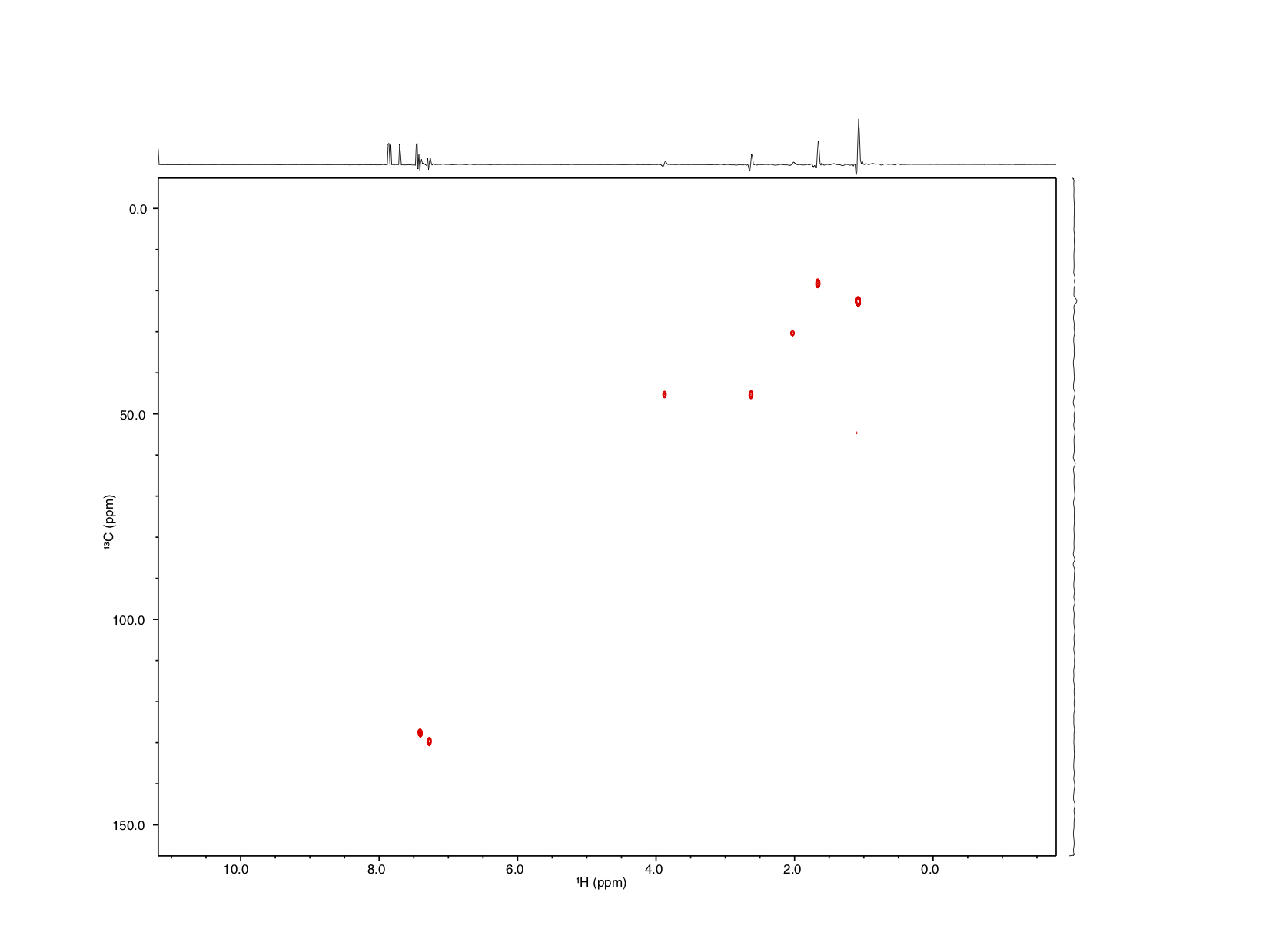1H-13C HMQC: The 2D HMQC (Heteronuclear Multiple-Quantum Correlation) experiment permits to obtain a 2D heteronuclear chemical shift correlation map between directly-bonded 1H and X-heteronuclei (commonly, 13C and 15N) . It is widely used because it is based on proton-detection, offering high sensitivity when compared with the conventional carbon-detected 2D HETCOR experiment. Similar results are obtained using the 2D HSQC experiment. The basic scheme of this experiment involves an initial delay (d1) during a period that allows the magnetization to return to an equilibrium steady- state. This is followed by the transfer of magnetization on the proton to the second nucleus, which may be 15N or 13C, via an INEPT (Insensitive nuclei enhanced by polarization transfer) step. After a time delay, the magnetization is transferred back to the proton via a retro-INEPT step and the signal is then recorded. CH and CH3 are positive and CH2 are negative, so you get the equivalent information of a DEPT experiment at the same time. Can also be used to obtain 15N chemical shifts at natural abundance. HSQC gives higher resolution and is preferred over HMQC.
Commands to be typed in blue; Commands to click on in copper.
Steps to run HMQC on VNMRJ(assumes you have tuned, locked, and shimmed your sample) (1) Type: PROTON ... Aquire a standard proton, array pw, and expand around the spectral window you want to observe and then type: movesw (2) Type: mp(1,2) ... move parameters ... if you need to create a new experiment type: cexp(2) (3) Type: jexp2 (4) Type: HMQC ... this depends on what type of probe you have (if utilizing a gradient probe type: gHMQC ... otherwise type: HMQC (5) Type: np=2048 nt=8 bs=4 ni=128 phase=1,2 ... adjust nt based on sample concentration and ni based on the degree of resolution you wish to obtain (6) Type: go ... Starts the experiment Steps to process and plot your data (1) Type: wft2da ... normal processing Example spectra